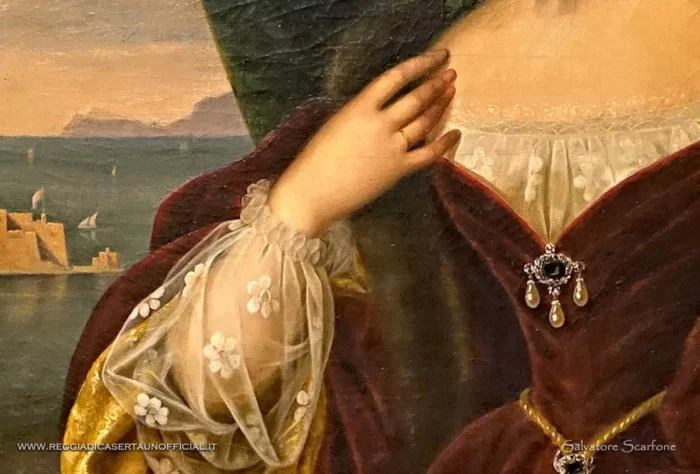Queen Maria Theresa of Habsburg Teschen
Biography of Queen Maria Theresa of Habsburg Teschen. She was the second wife of King Ferdinand II and Queen of the Kingdom of the Two Sicilies
The origins of Maria Theresa of Habsburg Teschen
Maria Theresa of Habsburg Teschen (Vienna, 31 July 1816 – Albano Laziale, 8 August 1867)
Maria Theresa of Habsburg Teschen was the second wife of Ferdinand II. Throughout her life in the Kingdom of the Two Sicilies she was crushed by the weight of two women: Maria Cristina, the king’s first companion, and her daughter-in-law, Maria Sofia. Between two giants of hers her small stature became still shorter, her choices still more ominous.
She was born in Baden on July 31, 1816. Her mother was Henrietta of Nassau-Weilburg, her father Archduke Charles of Austria, Duke of Teschen. She lost her mother at 13, her lack of tenderness, the severe and imperious character of her father strengthened her fragility that she hid behind her a mask of icy detachment. Small in build, pretty face, very black eyes and hair, she received a simple upbringing, due to her social position. She strongly believer, sometimes bigoted, she grew up avoiding any form of worldly life. Reserved and surly, she knew that they said of her: «the low, the low Austrian».
The meeting with the future king
In 1836 he met Ferdinand II of the Two Sicilies in Vienna, who had recently been widowed. “‘Na pupatella, ‘na face ‘e munacella,” the King of Naples said of her. The engagement had the aim of strengthening the ties between the Bourbons and the Habsburgs. The wedding was celebrated in Trento on 9 January 1837.
Bad luck and bad choices
Ten days after his arrival in Naples, a terrible fire broke out inside the rooms of the queen mother, so much so that it required the demolition of the old palace, the one from the viceregal era. Many believed that the arrival of the young bride was an ominous event. To this was added the outbreak of a cholera epidemic in the autumn of that same year. The news of the misfortune did not fail to reach Maria Teresa, who reacted by accentuating her form of isolation even more, choosing to spend her time inside the Palace, with few public outings and leading a retired life, with subdued tones and bourgeois, maintaining relations with a few people belonging to the most reactionary and anti-modern faction of the Kingdom. She had made a choice of her own and carried it through life.
She too chose not to learn Italian but devoted herself to the study of Neapolitan which was the language spoken by her husband. Husband to whom she was strongly attached and of whom she was morbidly jealous.
Hard was her position during the revolutionary wave that shook Europe in 1848.
Maria Teresa was above all a mother. In this role she acted throughout her life as a mother also to her son not hers, the heir to the throne Francis II. It was she who organized his marriage to Maria Sofia of Bavaria, regretting it for life.
The end
King Ferdinand II died, consumed by illness, at the palace of Caserta, on May 22, 1859. He mourned him to exhaustion. A part of his existence went away with him, the best part of him, the one to which he had clung with all his strength. She became queen mother of a kingdom where the king was not her son. She died in Albano on August 8, 1867, at the age of only 51, buried in the church of Santa Maria della Stella with the last of her children.


